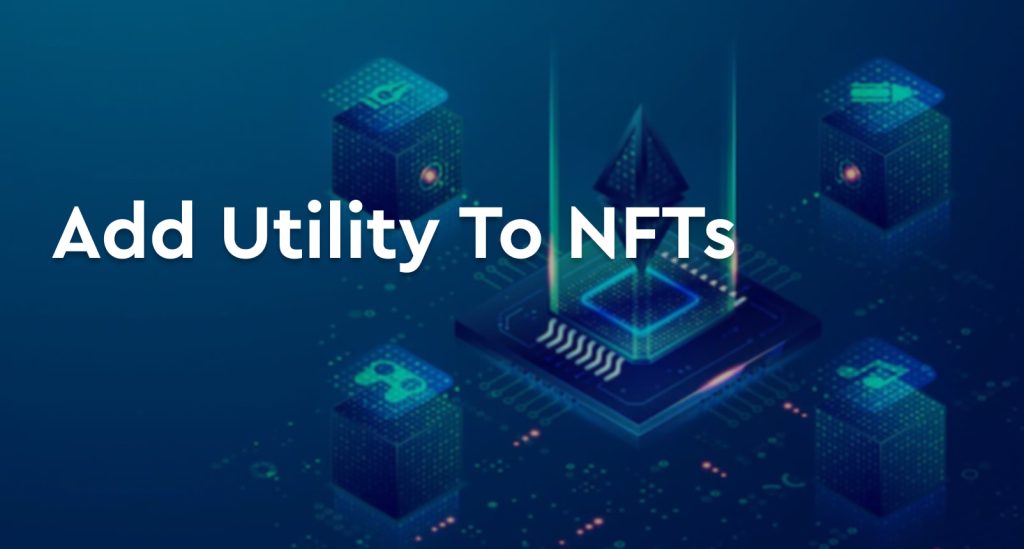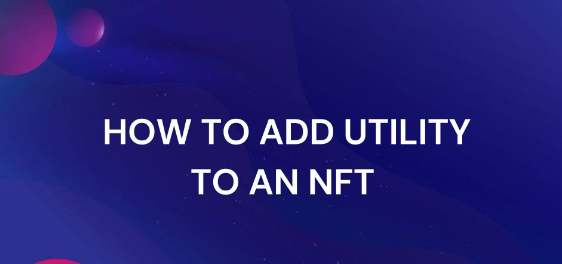
James Carter
How to Add Utility to an NFT: A Step-by-Step Guide

The world of digital assets has been growing rapidly in recent years, with non-fungible tokens (NFTs) becoming one of the most popular and widely-discussed topics in the world of cryptocurrencies and blockchain. NFTs are unique digital assets that can represent anything from art and music to virtual real estate and collectibles. While NFTs have been around for a few years, the recent surge in popularity has sparked a new interest in adding utility to these unique tokens. In this article, we’ll talk about the idea of NFT utility, the different ways to add it, best practices, problems and things to think about, and the future of NFTs.
Understanding the Utility of NFTs
One of the key defining features of NFTs is their non-fungibility, which means that each token is unique and cannot be replaced by any token. The value of an NFT is determined by its rarity, demand, and the utility it provides to its owner. Utility, in this context, refers to the practical or functional use that an NFT can provide. Simply put, the more utility an NFT has, the more valuable it becomes.
Examples of NFT Utility
There are several examples of NFTs that have been designed with utility in mind. Some of the most popular include:
- Gaming NFTs: Many popular video games, such as Fortnite and World of Warcraft, have introduced NFTs that can be used to purchase virtual items or to participate in in-game events.
- Art NFTs: Artists and creatives have been quick to embrace NFTs as a way to monetize their work. By creating unique digital artworks and selling them as NFTs, artists can control the distribution of their work and ensure that it is not replicated or pirated.
- Music NFTs: Musicians and music labels are also exploring the use of NFTs to monetize their work. By creating NFTs that represent exclusive releases or limited-edition albums, artists can control the distribution of their music and ensure that it is only available to those who purchase it.
- Collectible NFTs: NFTs are also being used to create digital collectibles, such as virtual trading cards or rare in-game items. These NFTs can have a high value due to their rarity and the value they provide to their owners.
This is How to Add Utility to an NFT
There are various ways that can be used to add utility to NFTs, including:
- Integrating with Decentralized Applications (DApps)
One of the easiest ways to add utility to NFTs is to integrate them with Decentralized Applications (DApps). DApps are decentralized software programs that run on a blockchain and can provide a wide range of functionalities and services, such as gaming, trading, and more. By integrating NFTs with DApps, developers can create a new generation of NFTs that provide value to their owners beyond simple ownership and collection.
- Linking to Physical Assets or Services
Another way to add utility to NFTs is to link them to physical assets or services. For example, an NFT could represent a piece of real estate or a physical item, such as a piece of jewelry or a collectible. By linking the NFT to the physical asset, owners can have access to the asset or services associated with it, such as rental income or maintenance services.
- Creating NFT Marketplaces
A third way to add utility to NFTs is by creating NFT marketplaces where NFTs can be traded, bought, and sold. These marketplaces can provide a platform for NFT holders to buy, sell, and trade their assets, and they can also be used to host auctions and other events. This can increase the utility of NFTs by providing a centralized platform for users to trade and exchange NFTs, and it can also create a sense of community around NFTs and the assets they represent.
- Offering NFTs as Rewards or Incentives
Another way to add utility to NFTs is to offer them as rewards or incentives for users who participate in certain activities or events. For example, a company could offer NFTs as rewards for users who complete surveys or participate in social media campaigns. This can increase the value of NFTs by providing a tangible reward for users and increasing the demand for NFTs.
WATCH THE VIDEO BELOW FOR MORE CLARIFICATION
Best Practices for Adding Utility to NFTs
When adding utility to NFTs, it is important to consider the following best practices:
- Ensuring Compatibility with Blockchain Technology
One of the most important factors when adding utility to NFTs is ensuring compatibility with blockchain technology. NFTs are built on blockchain platforms, and it is important to ensure that the technology used to add utility to NFTs is compatible with the blockchain platform used to create the NFTs.
- Making NFTs Easily Accessible and User-Friendly
Another good idea is to make NFTs easy to find and easy to use. This means that NFTs should be simple to trade, use, and understand. This can be done by making a user interface that is clear and easy to understand and by giving users clear and easy-to-understand instructions on how to use NFTs.
- Offering a Clear and Valuable Value Proposition
It is also important to offer a clear and valuable value proposition when adding utility to NFTs. This means that NFTs should provide a clear and tangible benefit to their owners, such as access to exclusive content, events, or rewards. By offering a clear and valuable value proposition, NFTs can increase their value and demand, making them more attractive to users.
- Building a Strong Community of NFT Holders
Finally, it is important to build a strong community of NFT holders. This can be done by hosting events, creating forums and discussion groups, and engaging with NFT holders to understand their needs and interests. By building a strong community of NFT holders, NFTs can increase their utility and value, as well as create a sense of community and belonging for NFT holders.
Challenges and Considerations
While adding utility to NFTs has the potential to increase their value and demand, there are several challenges and considerations that should be taken into account, including:
- Technical Challenges
Adding utility to NFTs is hard because the process is hard to understand from a technical point of view. To do this, you need to know a lot about blockchain technology and be able to manage and set up new software and platforms.

- Legal and Regulatory Challenges
The legal and regulatory environment around NFTs is also a problem. NFTs are still a fairly new idea, and the laws and rules that govern them are still being made and improved. It’s vital to keep updated with the latest changes in this field and to work with legal and regulatory experts to make sure that NFTs are used in a way that follows all laws and rules.
- Competition in the NFT Market
Finally, competition in the NFT market is another challenge to consider. As the popularity of NFTs continues to grow, the market is becoming increasingly crowded and competitive. In order to stand out and add real value to NFTs, it is important to stay ahead of the curve and offer innovative and unique solutions. This can be achieved by staying up-to-date with the latest trends and developments in the NFT market, as well as by continuously evaluating and improving the utility of NFTs.
Conclusion
Conclusively, adding utility to NFTs is an important step in increasing their value and demand. By providing NFTs with clear and tangible benefits and by creating platforms for NFTs to be traded, bought, and sold, NFTs can become more valuable and attractive to users. It is important to consider best practices when adding utility to NFTs, such as ensuring compatibility with blockchain technology, making NFTs easily accessible and user-friendly, offering a clear and valuable value proposition, and building a strong community of NFT holders.
However, there are also several challenges and considerations to take into account, including technical complexity, legal and regulatory challenges, and competition in the NFT market. By carefully navigating these challenges and continuously improving the utility of NFTs, NFTs can become a valuable and valuable asset for users and a key player in the digital economy.
Latest
Blockchain
09 May 2024
Blockchain
19 Apr 2024
Blockchain
16 Jan 2024
Blockchain
31 Aug 2023
Blockchain
24 Jun 2023
Blockchain
24 Jun 2023













